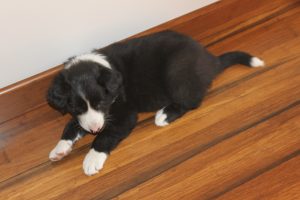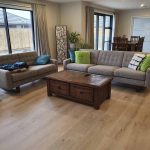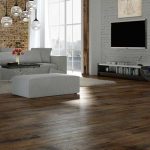Bamboo: Sustainable and Stunning!
Choose Moso Bamboo flooring for a sustainable and hypoallergenic flooring option
Bamboo flooring offers a naturally beautiful alternative to timber flooring and it’s packed with desirable features for architects and specifiers. As a sustainable plantation grown product, bamboo is environmentally friendly, eclipses timber for durability and offers a more hypoallergenic indoor space. Perfect if you’ve got kids who are easily susceptible to allergies.
Well, why Moso Bamboo?
Moso bamboo produces higher density and harder fibers of all the bamboo species, making it perfect for withstanding many years of foot traffic. Moso bamboo also outperforms all other bamboos and hardwood timbers in carbon dioxide absorption and oxygen production.
Bamboo that is used in your flooring is harvested after only five to six years and once the Moso poles are harvested, it is then compressed under high pressure to create a stunningly beautiful flooring that is stable and yields high performance.
The pre-finish on the bamboo planks includes 12 topcoats of primer, anti-abrasion, UV filters, and sealers. The resulting flooring requires no further finishing and tops compression tests compared to other flooring such as oak, jarrah and kwila.
Moso Bamboo flooring is not only sustainable, environmentally friends and durable but it tops hardness tests above its class.
The Janka Rating tests the hardness of wood and measures the force required to embed an 11.28mm steel ball halfway of its diameter into the wood. This test determines the ability of the wood to withstand denting and wear.
The higher the rating, the harder the wood and Moso bamboo rates almost twice that of oak and jarrah.
Another benefit of bamboo flooring is the easy click locking installation system that provides a strong and simple floating floor. The boards firmly lock together making installation simple and efficient, saving you money and time in the process.
Remember a few key practices when installing bamboo flooring to ensure you get the most out of it.
Poorly installed bamboo has attracted much attention and bad publicity, so following the correct installation requirements is essential. If you are unsure about whether you’re following the correct requirements, get in touch with our flooring specialists.
Bamboo, like wood, is affected by humidity and excessive changes in humidity results in swelling while low air humidity results in shrinking.
Because of this, Bamboo flooring requires acclimatization for a period of 48 hours in the room prior to installation at a room temperature of 18 to 21 degrees Celsius.
 Like wood, Bamboo is affected by humidity. Excessive changes in humidity result in swelling, while low air humidity can result in shrinking. To compensate for this, allow a minimum of 10mm wherever the floor meets vertical surfaces, ensuring the Bamboo can “breathe” with its environment and isn’t affected by seasonal changes. To conceal the expansion gap that occurs, undercut the wall linings or apply skirtings of at least 15mm.
Like wood, Bamboo is affected by humidity. Excessive changes in humidity result in swelling, while low air humidity can result in shrinking. To compensate for this, allow a minimum of 10mm wherever the floor meets vertical surfaces, ensuring the Bamboo can “breathe” with its environment and isn’t affected by seasonal changes. To conceal the expansion gap that occurs, undercut the wall linings or apply skirtings of at least 15mm.
A professional finish around door sills, cabinetry and transitions to other floorings such as carpet, tiles or vinyl is achieved with a ‘u’ channel or trim. If the flooring is going to be laid where it can be exposed to more moisture; such as around dishwashers, sinks, and entrances to bathrooms or laundries, silicone should be inserted into the expansion gap.
A floating floor is always laid with an underlay to provide sound reduction, cushioning and a moisture barrier. There are different qualities including rubber inlays that absorb maximum sound for stairs, landings and multi-story buildings. If you’re unsure about the type of underlay you should use, get in touch with your flooring specialist.
The ease of maintenance and care that is required for bamboo flooring ensures that those seeking a dust-free home environment can achieve this easily with regular vacuuming and a damp microfiber mop.
However, to preserve the good looks of the natural bamboo in the long run, utilize mats at entranceways to trap sand and grit, use felt under furniture legs, clip pets claws regularly and lift rather than drag furniture.
Words by L M Powell





